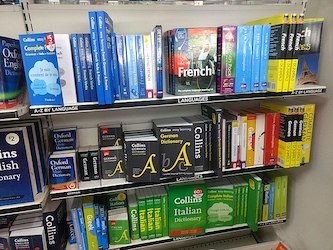Co-working spaces have become increasingly popular, especially in the wake of the pandemic. Jill Parrish, a London-based professional, shares her experience of working at a co-working space near her home in Twickenham. Her employer subsidizes her membership at Patch, allowing her to work there twice a week. This trend, known as “working near home,” is gaining traction as an alternative to working from home or commuting to the office.
WeWork, a prominent co-working space provider, recently filed for bankruptcy in the US. However, smaller community-focused co-working hubs like Patch, located in residential areas, are thriving. These hubs offer a range of amenities and attract workers who seek a productive and social work environment close to their homes.
Freddie Fforde, the founder of Patch, emphasizes the economic viability of smaller co-working hubs, as they benefit from lower rent in towns and on the fringes of cities. These hubs also cater to working parents, providing proximity to childcare arrangements, and offer a sense of community and social interaction.
Entrepreneur Vibushan Thirukumar has established Oru Space, a co-working hub in south London, which also serves as a wellness center. Thirukumar aims to create a sense of community and local investment by providing not only workspace but also access to wellness activities and social events.
While some experts believe that the demand for traditional office space is increasing, others argue that the co-working sector is growing, particularly in community-focused hubs. These hubs are seen as valuable assets to their neighborhoods, repurposing buildings and fostering connections among local residents.
In conclusion, the concept of working near home in community co-working hubs is gaining popularity as a viable alternative to traditional office spaces and remote work. These hubs not only offer a productive work environment but also contribute to the local economy and foster a sense of community.
Original news source: Work near home: The co-working hubs for locals (BBC)
Listen
Slow
Normal
Fast
Group or Classroom Activities
Warm-up Activities:
– Opinion Poll
Instructions: Create a list of statements about the future of workspaces based on the article, such as “Co-working spaces will become more prevalent than traditional offices in the next decade.” Have students move to different areas of the room to represent “Agree,” “Disagree,” or “Unsure.” Afterward, have a discussion where each group shares their reasons.
– News Reporter Role-play
Instructions: Pair up students and assign one the role of a news reporter and the other the role of an expert on co-working spaces. Using information from the article, the reporter interviews the expert about the rise of co-working spaces and their impact on local communities.
– Vocabulary Pictionary
Instructions: Write down key vocabulary from the article (e.g., “subsidize,” “amenities,” “thriving,” “economic viability,” “wellness center”). Students take turns drawing the words on the board without speaking or writing any words, while the rest of the class guesses the vocabulary.
– Mind Map
Instructions: Have students create a mind map on a large paper or whiteboard that visually organizes the main ideas and details from the article. This can include the benefits of co-working spaces, the economic impact, and the social aspects. Students can work in small groups to discuss and draw connections between the concepts.
– Future Predictions
Instructions: Ask students to write down their predictions about the future of co-working spaces and how they will affect local economies and social structures. They can consider factors such as technology, economic trends, and societal changes. Have students share their predictions with the class and discuss the likelihood of these scenarios.
Comprehension Questions:
1. What has led to the increasing popularity of co-working spaces according to the article?
2. How often does Jill Parrish work at the co-working space near her home?
3. What is the trend known as “working near home”?
4. Despite WeWork’s bankruptcy, why are smaller co-working hubs like Patch thriving?
5. What advantages does Freddie Fforde see in smaller co-working hubs located in towns and on the fringes of cities?
6. What additional features does Oru Space offer beyond being a co-working hub?
7. How do experts’ opinions differ on the demand for traditional office space versus co-working spaces?
8. What benefits do community co-working hubs provide to their neighborhoods beyond a place to work?
Go to answers ⇩
Listen and Fill in the Gaps:
Co-(1)______ spaces have become increasingly popular, especially in the wake of the pandemic. Jill (2)______, a London-based professional, shares her experience of working at a co-working space near her home in Twickenham. Her (3)______ subsidizes her membership at Patch, allowing her to work there twice a week. This trend, known as “working near home,” is gaining traction as an (4)______ to working from home or commuting to the office.
WeWork, a prominent co-working space provider, recently filed for bankruptcy in the US. However, smaller community-focused co-working hubs like Patch, located in residential areas, are thriving. These hubs (5)______ a range of (6)______ and attract workers who seek a productive and social work environment close to their homes.
(7)______ Fforde, the founder of Patch, emphasizes the economic viability of smaller co-working hubs, as they benefit from lower rent in towns and on the fringes of (8)______. These hubs also cater to working parents, providing proximity to (9)______ arrangements, and offer a (10)______ of community and social interaction.
Entrepreneur Vibushan Thirukumar has established Oru Space, a co-working hub in south London, which also serves as a wellness center. Thirukumar aims to (11)______ a sense of community and (12)______ investment by providing not only workspace but also access to wellness activities and social events.
While some experts believe that the demand for traditional office space is increasing, others argue that the co-working sector is growing, particularly in community-focused hubs. These hubs are seen as valuable assets to their neighborhoods, repurposing (13)______ and fostering connections among local (14)______.
In conclusion, the concept of working near home in community co-working hubs is gaining popularity as a viable alternative to (15)______ office spaces and (16)______ work. These hubs not only offer a productive work environment but also contribute to the local economy and foster a sense of community.
Go to answers ⇩
Discussion Questions:
Students can ask a partner these questions, or discuss them as a group.
1. What is your definition of a co-working space, and have you ever used one?
2. How would you feel if your employer offered to subsidize a co-working space membership for you?
3. Do you like the idea of “working near home” as opposed to working from home or commuting to an office? Why or why not?
4. Do you think smaller community-focused co-working hubs would benefit your local area? Why?
5. What amenities do you think are essential in a co-working space to make it attractive for professionals?
6. How important is having a sense of community in your work environment to you?
7. What are your thoughts on co-working spaces that offer wellness activities and social events?
8. Can you envision a balance between traditional office spaces and co-working hubs in the future of work?
9. Do you believe that co-working spaces can truly foster connections among local residents? Why or why not?
10. How do you think the concept of co-working spaces has changed due to the pandemic?
11. What challenges do you think co-working spaces might face in the coming years?
12. Do you think it’s important for co-working hubs to also cater to working parents? Why?
13. How might co-working spaces impact the local economy in your opinion?
14. Would you consider starting your own business in a co-working space? Why or why not?
15. What do you think are the key factors that make a co-working space successful?
Individual Activities
Vocabulary Meanings:
Match each word to its meaning.
Words:
1. co-working
2. Patch
3. near
4. hubs
5. community
6. local
7. alternative
8. productive
Meanings:
(a) Relating to a particular area or neighborhood
(b) A small, community-focused co-working space
(c) Efficient and effective
(d) Shared workspace
(e) A group of people living in the same area
(f) A different option
(g) Centers for work and social interaction
(h) Close to
Go to answers ⇩
Multiple Choice Questions:
1. What is the trend known as an alternative to working from home or commuting to the office?
(a) Working from a coffee shop
(b) Working near home
(c) Working in a traditional office
(d) Working from a park
2. What is the name of the co-working space provider that recently filed for bankruptcy in the US?
(a) Patch
(b) Oru Space
(c) Freelancer Hub
(d) WeWork
3. What is one of the benefits of smaller community-focused co-working hubs, according to the article?
(a) Lower rent in towns and on the fringes of cities
(b) Higher rent in city centers
(c) Limited amenities
(d) Lack of social interaction
4. What does Freddie Fforde, the founder of Patch, emphasize as the economic viability of smaller co-working hubs?
(a) They have high rent in city centers
(b) They have limited amenities
(c) They benefit from lower rent in towns and on the fringes of cities
(d) They lack a sense of community
5. What additional service does Oru Space, a co-working hub in south London, offer besides workspace?
(a) Access to a library
(b) Access to a swimming pool
(c) Access to wellness activities
(d) Access to a gaming room
6. What do some experts believe is growing in the co-working sector, particularly in community-focused hubs?
(a) Demand for remote work
(b) Demand for traditional office space
(c) Demand for large corporate offices
(d) Demand for community-focused hubs
7. What are community-focused co-working hubs seen as, according to the article?
(a) Detrimental to their neighborhoods
(b) Unimportant to their neighborhoods
(c) Unnecessary for local residents
(d) Valuable assets to their neighborhoods
8. What is the concept of working near home in community co-working hubs gaining popularity as?
(a) A viable alternative to traditional office spaces and remote work
(b) A less viable alternative to traditional office spaces and remote work
(c) A concept that is not gaining popularity
(d) A concept that is only popular in certain countries
Go to answers ⇩
True or False Questions:
1. Some experts believe that the demand for traditional office space is increasing, while others argue that the co-working sector is growing.
2. Freddie Fforde, the founder of Patch, emphasizes the economic viability of smaller co-working hubs.
3. Co-working spaces have become less popular, especially after the pandemic.
4. Entrepreneur Vibushan Thirukumar has closed Oru Space, a co-working hub in south London, which also serves as a wellness center.
5. The concept of working far from home in individual co-working hubs is losing popularity as a viable alternative to traditional office spaces and remote work.
6. Smaller community-focused co-working hubs like Patch, located in residential areas, are thriving.
7. Jill Parrish, a London-based professional, shares her experience of working at a co-working space near her home in Twickenham.
8. WeWork, a prominent co-working space provider, recently emerged from bankruptcy in the US.
Go to answers ⇩
Write a Summary:
Write a summary of this news article in two sentences.
Check your writing now with the best free AI for English writing!
Writing Questions:
Answer the following questions. Write as much as you can for each answer.
Check your answers with our free English writing assistant!
1. What is the concept of “working near home,” and how does Jill Parrish’s experience exemplify this trend?
2. Despite WeWork’s bankruptcy, how are smaller co-working spaces like Patch managing to thrive?
3. What are the economic advantages of smaller co-working hubs according to Freddie Fforde, the founder of Patch?
4. How does Oru Space differentiate itself from other co-working spaces, as established by entrepreneur Vibushan Thirukumar?
5. What role do community-focused co-working hubs play in their neighborhoods, as discussed in the article?
Answers
Comprehension Question Answers:
1. What has led to the increasing popularity of co-working spaces according to the article?
The increasing popularity of co-working spaces is attributed to the pandemic, which has shifted the work culture towards alternatives to traditional office spaces and remote work.
2. How often does Jill Parrish work at the co-working space near her home?
Jill Parrish works at the co-working space near her home in Twickenham twice a week.
3. What is the trend known as “working near home”?
The trend known as “working near home” refers to the practice of working at a co-working space close to one’s residence as an alternative to working from home or commuting to a distant office.
4. Despite WeWork’s bankruptcy, why are smaller co-working hubs like Patch thriving?
Smaller co-working hubs like Patch are thriving because they are community-focused, offer a range of amenities, and are located in residential areas, making them more convenient and appealing to local workers.
5. What advantages does Freddie Fforde see in smaller co-working hubs located in towns and on the fringes of cities?
Freddie Fforde sees economic viability in smaller co-working hubs due to lower rent in towns and city fringes, and they cater to the needs of working parents by providing proximity to childcare and fostering a sense of community and social interaction.
6. What additional features does Oru Space offer beyond being a co-working hub?
Oru Space offers additional features such as a wellness center, access to wellness activities, and social events, aiming to create a sense of community and local investment.
7. How do experts’ opinions differ on the demand for traditional office space versus co-working spaces?
Some experts believe that the demand for traditional office space is increasing, while others argue that the co-working sector, particularly community-focused hubs, is growing.
8. What benefits do community co-working hubs provide to their neighborhoods beyond a place to work?
Community co-working hubs contribute to the local economy, repurpose buildings, and foster connections among local residents, thereby providing benefits beyond just a place to work.
Go back to questions ⇧
Listen and Fill in the Gaps Answers:
(1) working
(2) Parrish
(3) employer
(4) alternative
(5) offer
(6) amenities
(7) Freddie
(8) cities
(9) childcare
(10) sense
(11) create
(12) local
(13) buildings
(14) residents
(15) traditional
(16) remote
Go back to questions ⇧
Vocabulary Meanings Answers:
1. co-working
Answer: (d) Shared workspace
2. Patch
Answer: (b) A small, community-focused co-working space
3. near
Answer: (h) Close to
4. hubs
Answer: (g) Centers for work and social interaction
5. community
Answer: (e) A group of people living in the same area
6. local
Answer: (f) A different option
7. alternative
Answer: (c) Efficient and effective
8. productive
Answer: (a) Relating to a particular area or neighborhood
Go back to questions ⇧
Multiple Choice Answers:
1. What is the trend known as an alternative to working from home or commuting to the office?
Answer: (b) Working near home
2. What is the name of the co-working space provider that recently filed for bankruptcy in the US?
Answer: (d) WeWork
3. What is one of the benefits of smaller community-focused co-working hubs, according to the article?
Answer: (a) Lower rent in towns and on the fringes of cities
4. What does Freddie Fforde, the founder of Patch, emphasize as the economic viability of smaller co-working hubs?
Answer: (c) They benefit from lower rent in towns and on the fringes of cities
5. What additional service does Oru Space, a co-working hub in south London, offer besides workspace?
Answer: (c) Access to wellness activities
6. What do some experts believe is growing in the co-working sector, particularly in community-focused hubs?
Answer: (b) Demand for traditional office space
7. What are community-focused co-working hubs seen as, according to the article?
Answer: (d) Valuable assets to their neighborhoods
8. What is the concept of working near home in community co-working hubs gaining popularity as?
Answer: (a) A viable alternative to traditional office spaces and remote work
Go back to questions ⇧
True or False Answers:
1. Some experts believe that the demand for traditional office space is increasing, while others argue that the co-working sector is growing. (Answer: True)
2. Freddie Fforde, the founder of Patch, emphasizes the economic viability of smaller co-working hubs. (Answer: True)
3. Co-working spaces have become less popular, especially after the pandemic. (Answer: False)
4. Entrepreneur Vibushan Thirukumar has closed Oru Space, a co-working hub in south London, which also serves as a wellness center. (Answer: False)
5. The concept of working far from home in individual co-working hubs is losing popularity as a viable alternative to traditional office spaces and remote work. (Answer: False)
6. Smaller community-focused co-working hubs like Patch, located in residential areas, are thriving. (Answer: True)
7. Jill Parrish, a London-based professional, shares her experience of working at a co-working space near her home in Twickenham. (Answer: True)
8. WeWork, a prominent co-working space provider, recently emerged from bankruptcy in the US. (Answer: False)
Go back to questions ⇧













